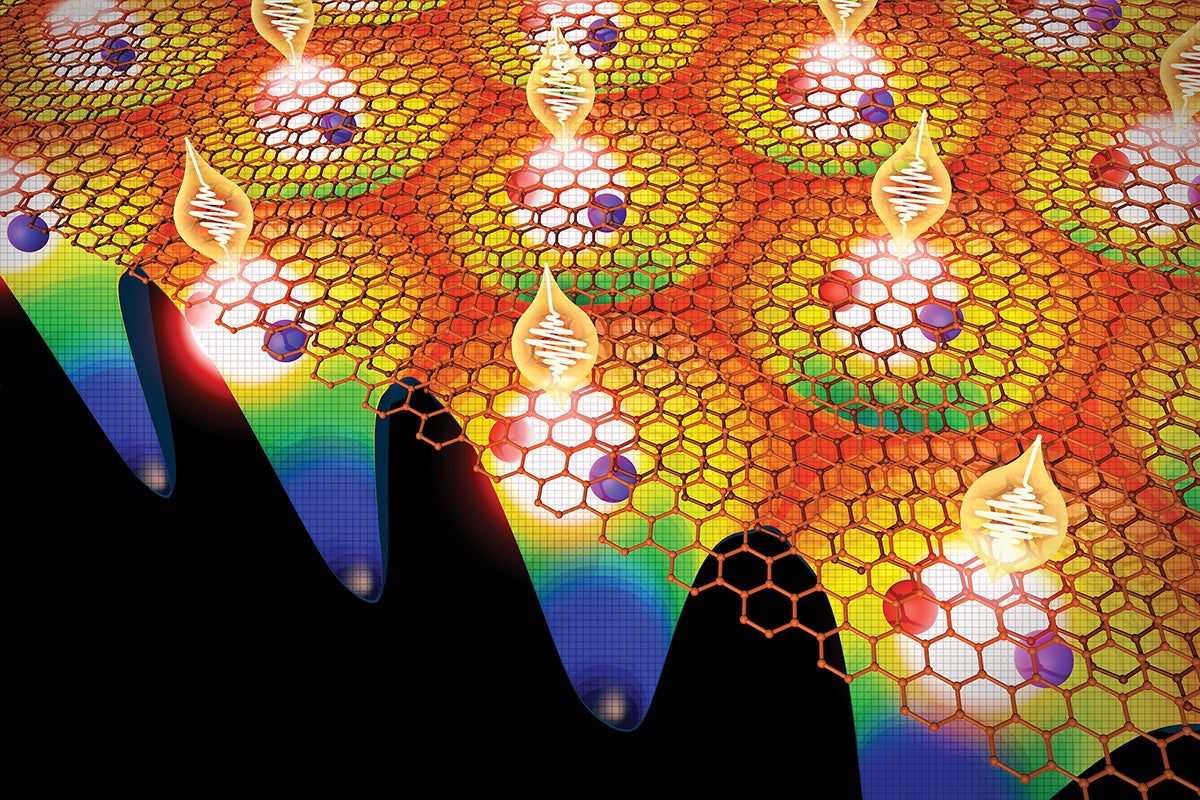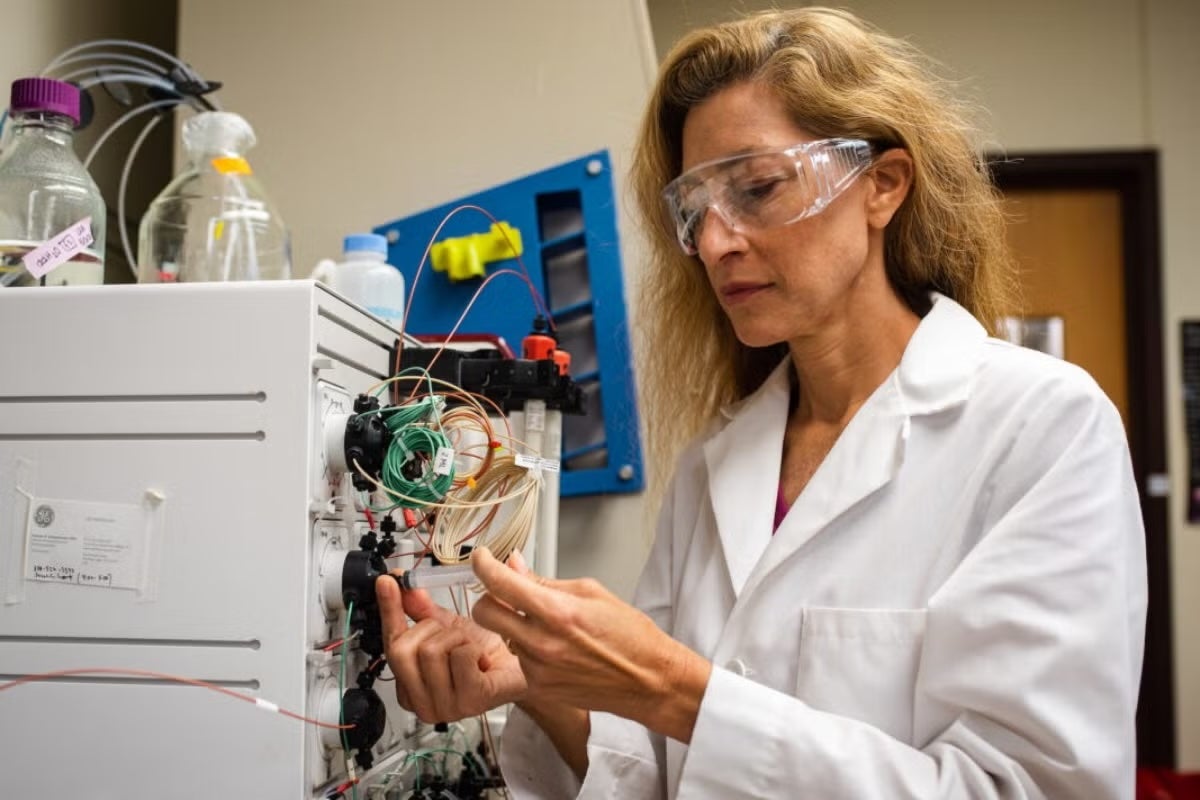Visualizing Science 2018: Beauty and Inspiration in College Research
Winners of the 2018 Visualizing Science contest include images of nanomaterials, the connection between chaos and electronics and a glimpse into the aural lives of the elderly.
Over the last six years, faculty, staff and students from across the College of Natural Sciences have submitted hundreds of images from their scholarly research for our annual Visualizing Science competition, and these images have been viewed by tens of thousands of people. The submitted images, often beautiful and stunning, are the ones that spoke to their creators, inspiring and informing them as they followed their scientific passions.
Using imagery in the pursuit of scientific discovery is a long-standing practice. Intimate portraits of study subjects, visual representations of data, and models of theoretical concepts have aided scientists throughout history as they sought answers to the mysteries of life and the universe. The detailed star maps of Su Song, Caspar Wessel’s geometric plots of complex numbers, the X-ray diffraction images of Rosalind Franklin, Richard Feynman’s physics diagrams, and even the photography of The University of Texas at Austin’s own Insects Unlocked project are but a few examples.
The College unveiled this year’s winning images at Art in Science, a Natural Sciences Week event put on by our Natural Sciences Council and the college’s communications and events office [Click here to see photos from this event]. The finalists, six of the most stunning submissions from our scientific community, appear below. The first five images were selected by a committee, based on their beauty and scientific merit. The public chose the final image, our People’s Choice, by voting on our college Facebook page. All six images will be displayed on campus in the UT Tower and the Kuehne Physics Mathematics Astronomy Library, as well as on digital screens throughout the College’s campus buildings.
We proudly present the winners of the 2018 Visualizing Science competition:
FIRST PLACE
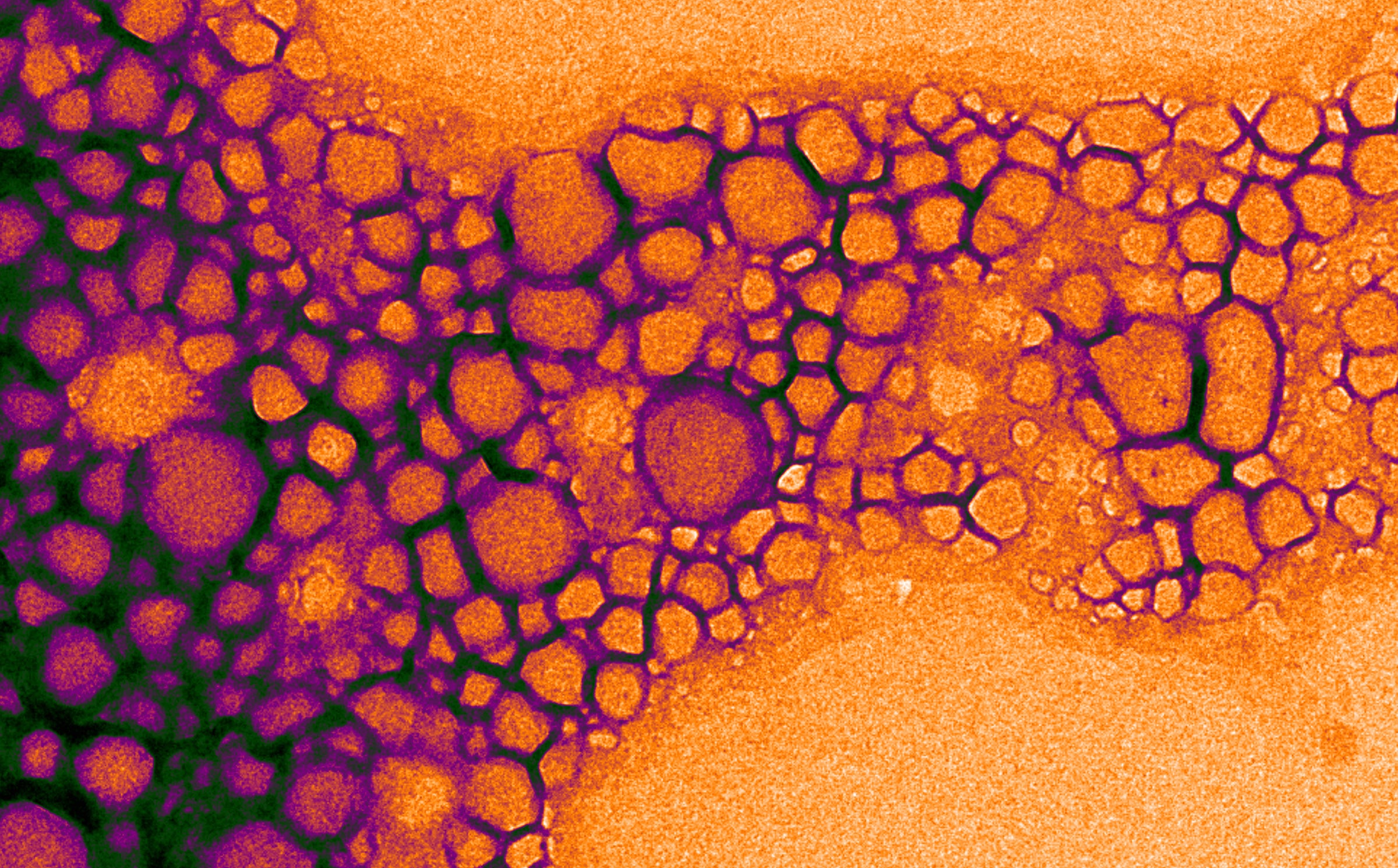
Nanodroplets filled with paramagnetic metals and perfluorocarbon materials can be exploited to track cells and biomarkers in vivo using Magnetic Resonance Imaging, aka MRI, with 19Fluorine, the only stable isotope of fluorine. Researchers at UT Austin are applying these agents to image immune cells and monitor cancer therapy in animal models. Shown here is a pseudocolored transmission electron micrograph of these nanomaterials, acquired in our Center for Biomedical Research Support’s Microscopy and Imaging Facility. Tyler King prepared the materials, Hongyu Guo acquired the image, and Dr. Emily Que generated the final graphic. — Dr. Emily Que, Assistant Professor, Department of Chemistry; Hongyu Guo Chemistry Graduate Student; and Tyler King, Chemistry Graduate Student.
SECOND PLACE
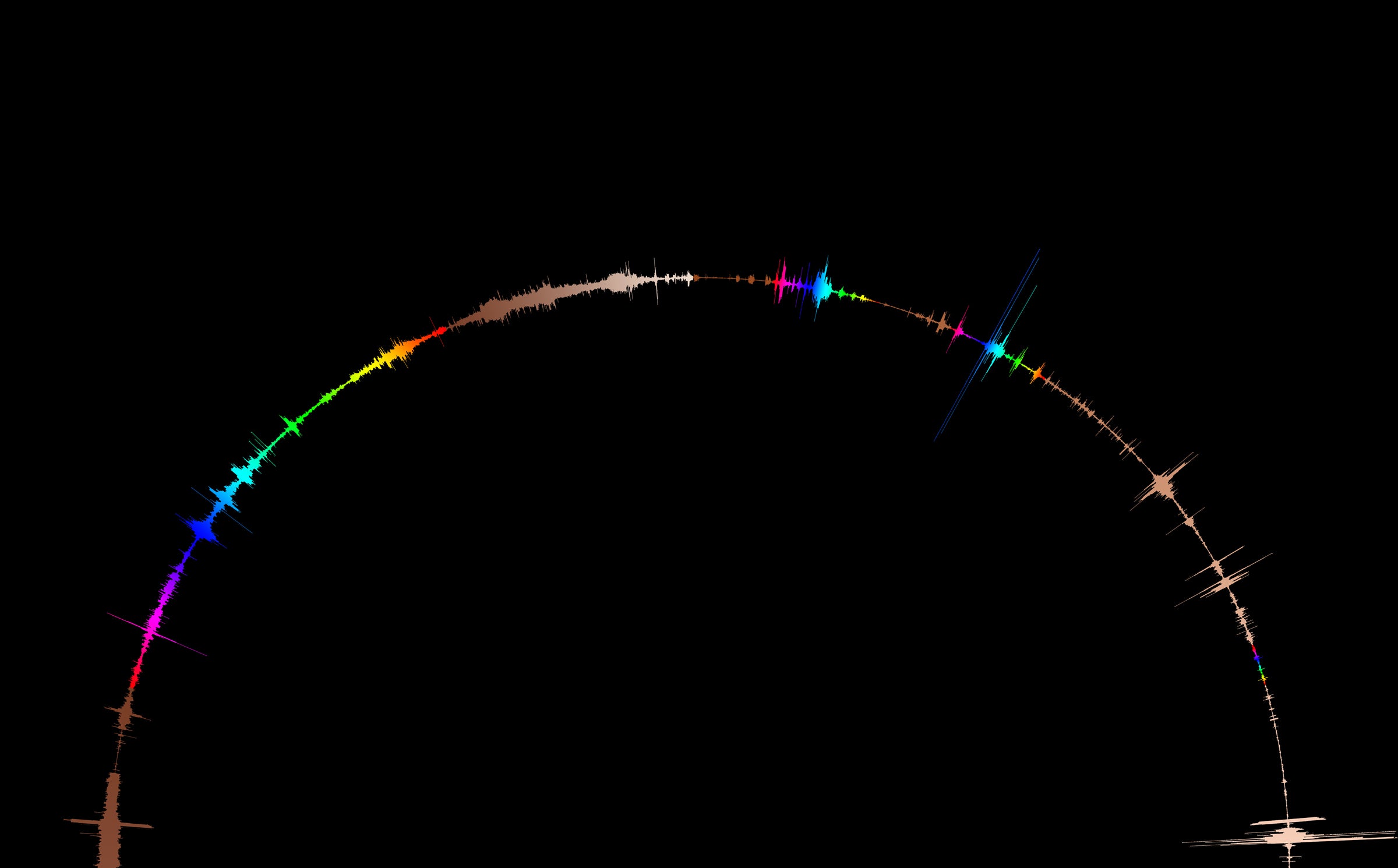
In late life, individuals are at risk of cognitive declines, physical impairments, and loneliness. Tracking the conversations and ambient sounds in an older adult’s daily life provides a window into how their everyday activities may contribute to or mitigate these risks. This acoustic rendering represents the top half of a clock and portrays sounds captured in an older adult’s waking hours from 9am to 3pm. The brown spikes are television viewing, when the person was likely sedentary with an increased risk of physical and cognitive decline. The rainbow sections are conversations, which reduce risks of cognitive decline and loneliness. — Meng Huo, Human Development and Family Sciences Graduate Student
THIRD PLACE
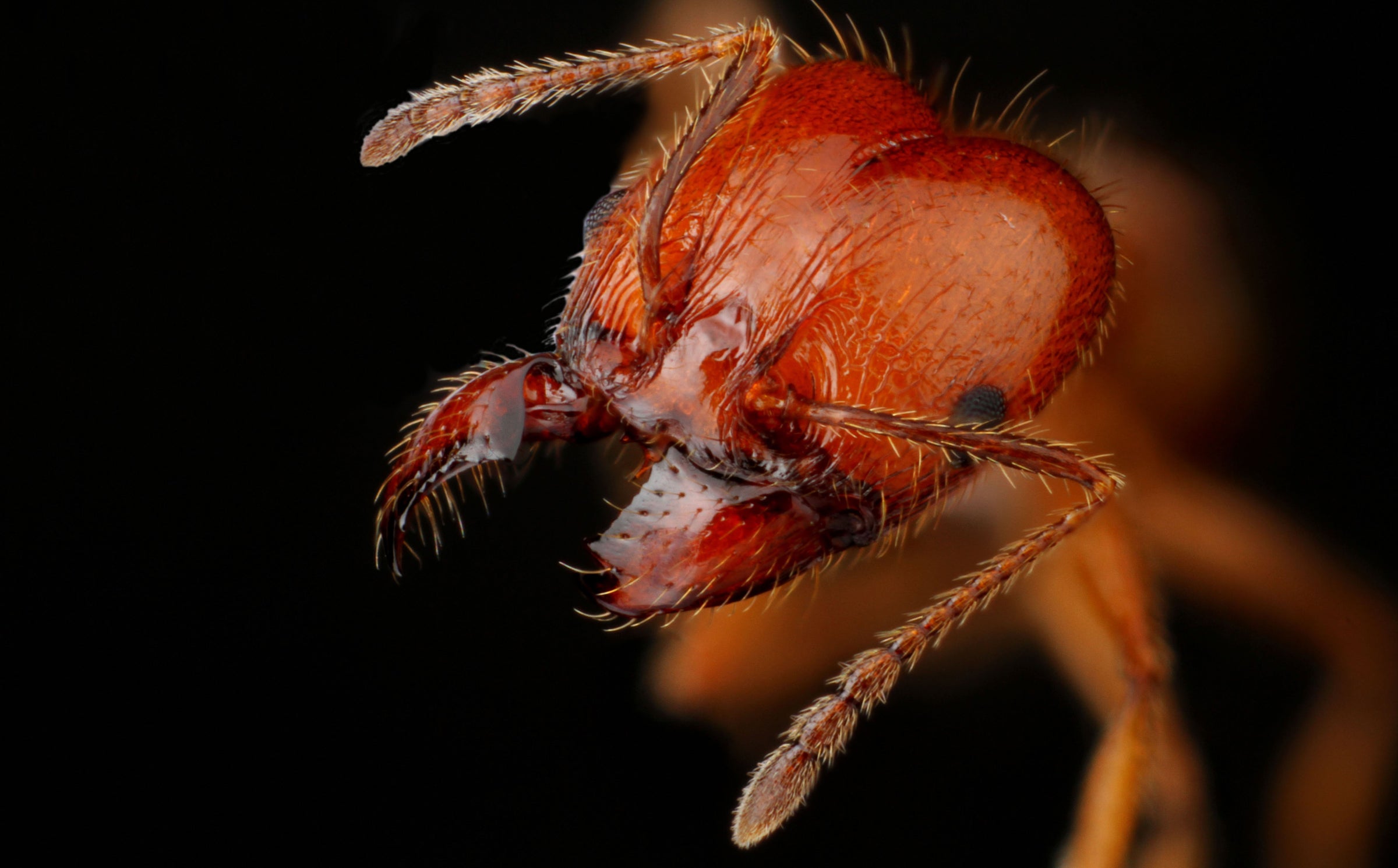
Pheidole, the “big-headed ant,” is a hyperdiverse ant genus that is extremely successful across North America. This is a focus-stacked image of a major worker ant of Pheidole dentata, a common species at Brackenridge Field Laboratory. Last year, Dr. Alex Wild found an unknown species of Solenopsis (the same genus as fire ants) at the field lab; that insect was a parasite of a different Pheidole species. Undergraduate Jen Schlauch became excited by the notion that a new species of ant could be found in an urban area known for ant research and embarked on a project examining habitat preferences for Pheidole ants at BFL in hopes of finding more of the unknown species. Instead, she found a different unknown parasitic species of ant, which she is currently studying. She took this photo when trying to learn how to identify different worker ants after collection. The ant in this image was collected by Dr. Wild, photographed by Schlauch, and is part of the Insects Unlocked project. — Jen Schlauch, Ecology, Evolution, and Behavior Undergraduate Student
HONORABLE MENTIONS

This is a visualization of two algebraic functions whose variables are defined sets of digits within integers. Think of it as the result of breaking integers into simpler components, and then having these number-parts undergo multiple algebraic operations to generate a unique sequence of numbers. The image’s creator studies evolution and the generation of semi-random outputs by algorithms and functions like these can open up interesting evolutionary avenues — such as novel structures, patterns and behaviors in artificial life software platforms — that would otherwise not be possible using standard methods. Since the functions generated can be manipulated and combined in a myriad of ways, they may also have potential in encryption technologies, but this possibility remains to be explored. — Gabriel Suarez, Cellular and Molecular Biology Graduate Student

The creator of this image aims to discover unexpected connections between chaos and electronics, leading to novel, powerful devices. Three examples of particles ricocheting off a well show the qualitative difference between chaos and order. In each example, a particle trajectory enters in black from below and evolves to blue over time. If the particle exits, it reenters using special iterated lattice scattering rules. The left plot shows chaos, with no discernible pattern of movement. The middle plot shows quasi-periodicity, meaning restricted movement (restricted to an area that avoids the well) but otherwise free. The right plot shows periodicity, restricted not just to an area but to a single path. The distribution of these behaviors reflects deeper symmetries that can manifest as altered properties in electronic systems. — Max Porter, Physics Graduate Student
PEOPLE’S CHOICE
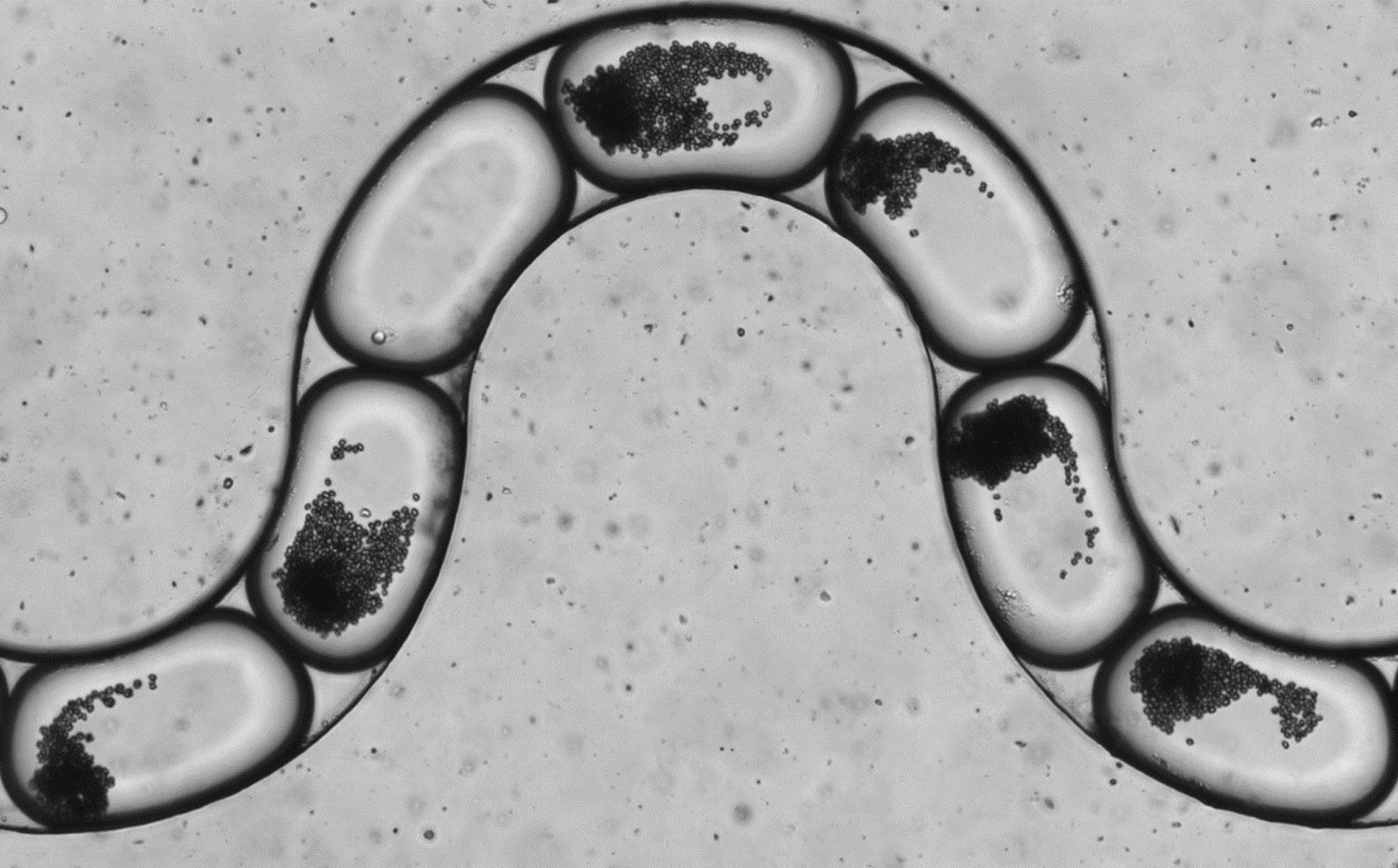
This light micrograph shows cells of Chlorella vulgaris, a type of green algae, growing in a microfluidics device. This reusable algae-on-a-chip technology permits the high-throughput screening of cultures by mixing media with algae and mineral oil to generate uniformly-sized microdroplets. More than 600 microdroplets can be captured across multiple channels, allowing for the simultaneous observation and analysis of 100’s of unique experiments on a very short time scale. This image represents a collaboration of the Manning Laboratory, UTEX Culture Collection of Algae, Dr. Arum Han at Texas A&M-College Station, and Dr. Hesham Shafik at the University of Port Said, Egypt. — Marwa Aly, Visiting Doctoral Student, Department of Molecular Biosciences

